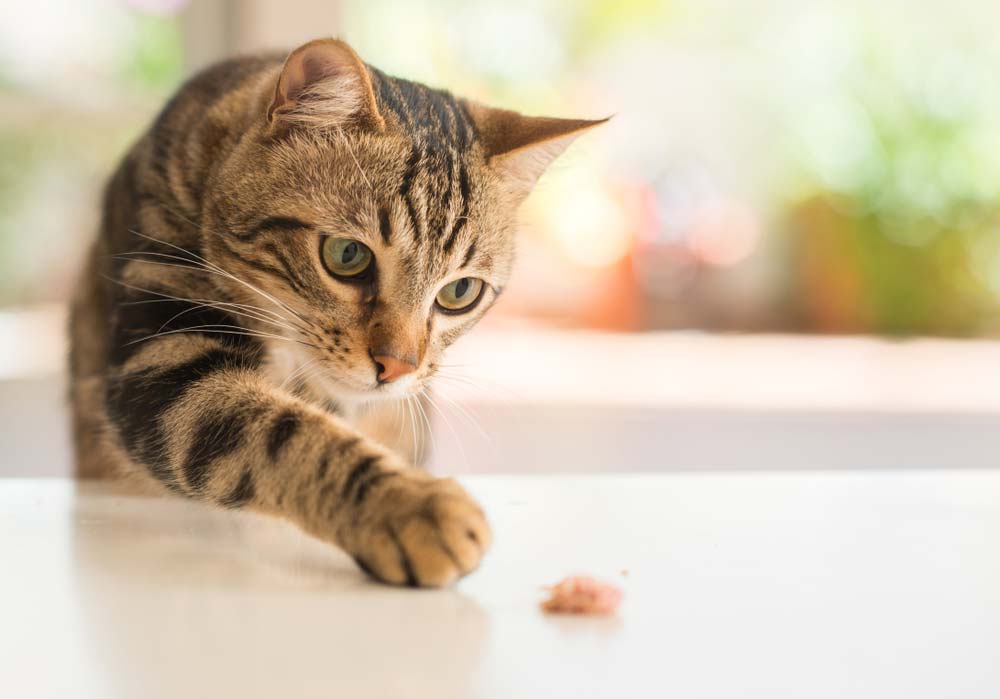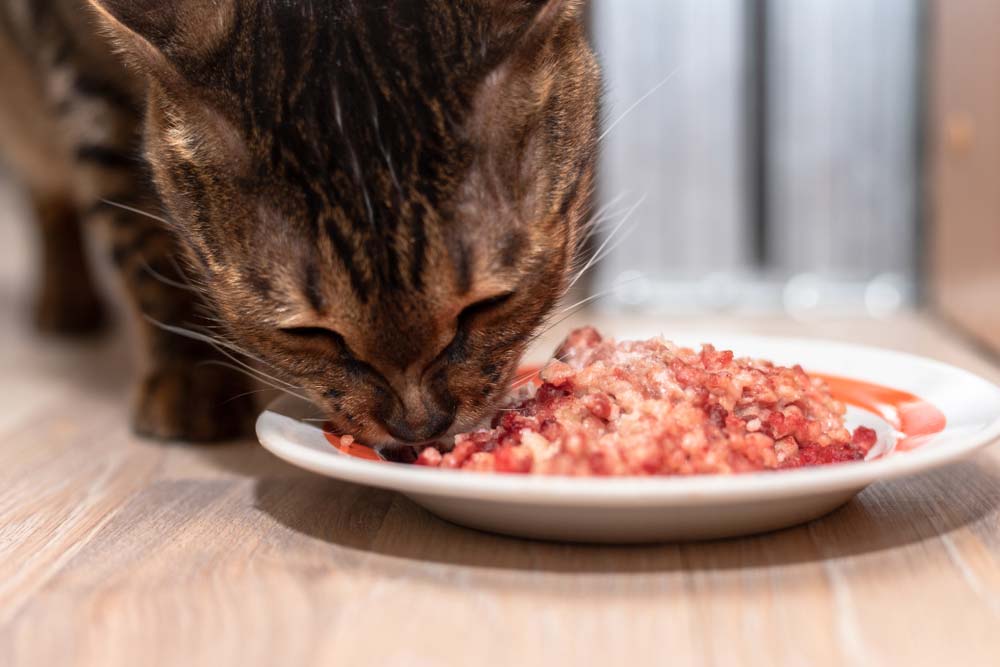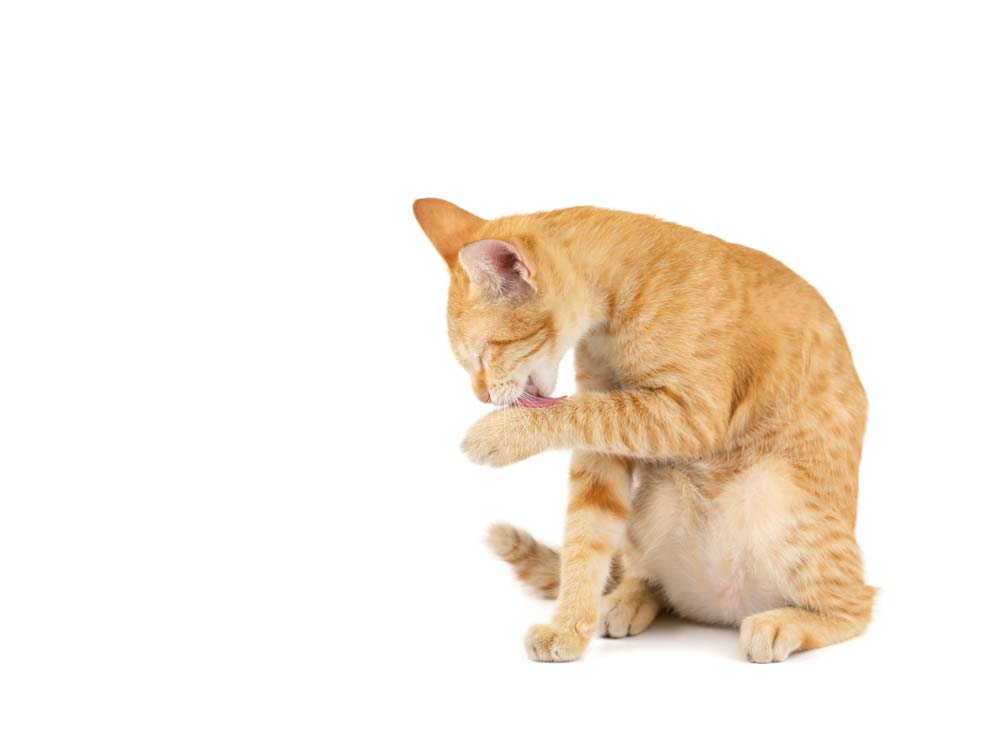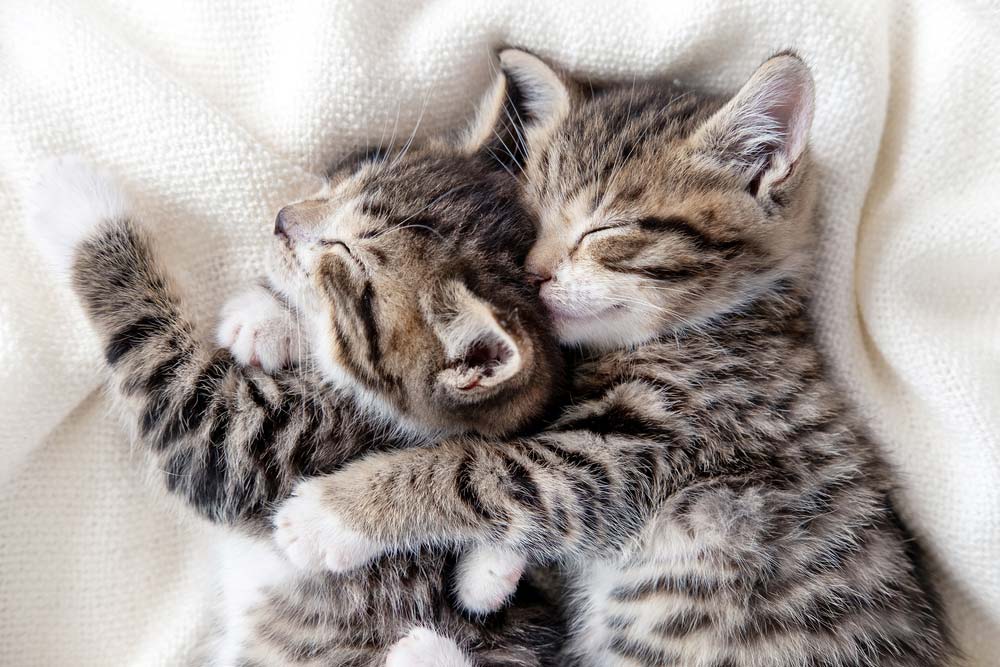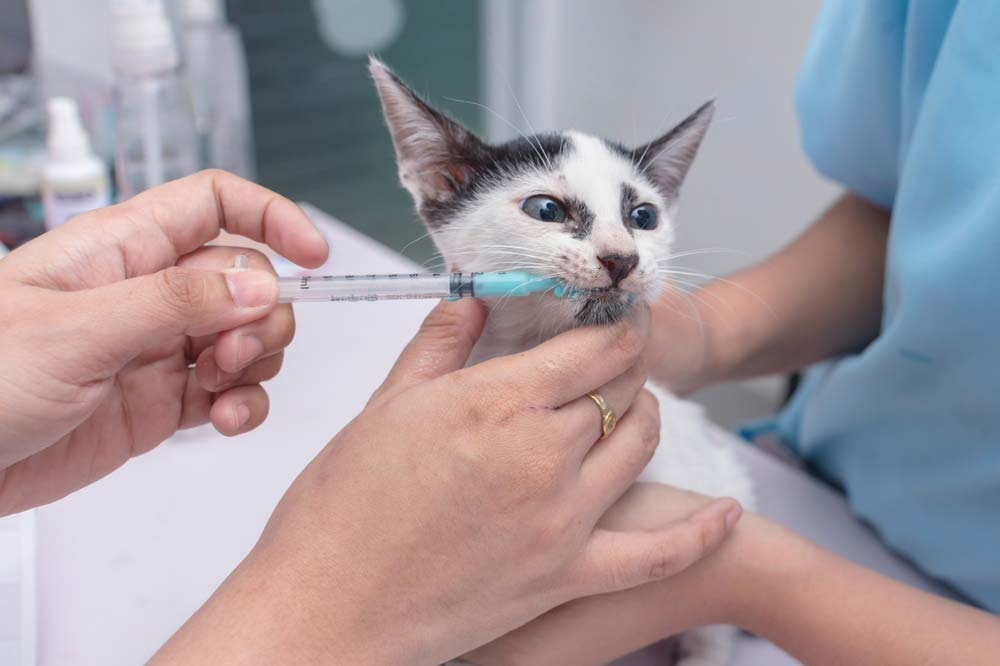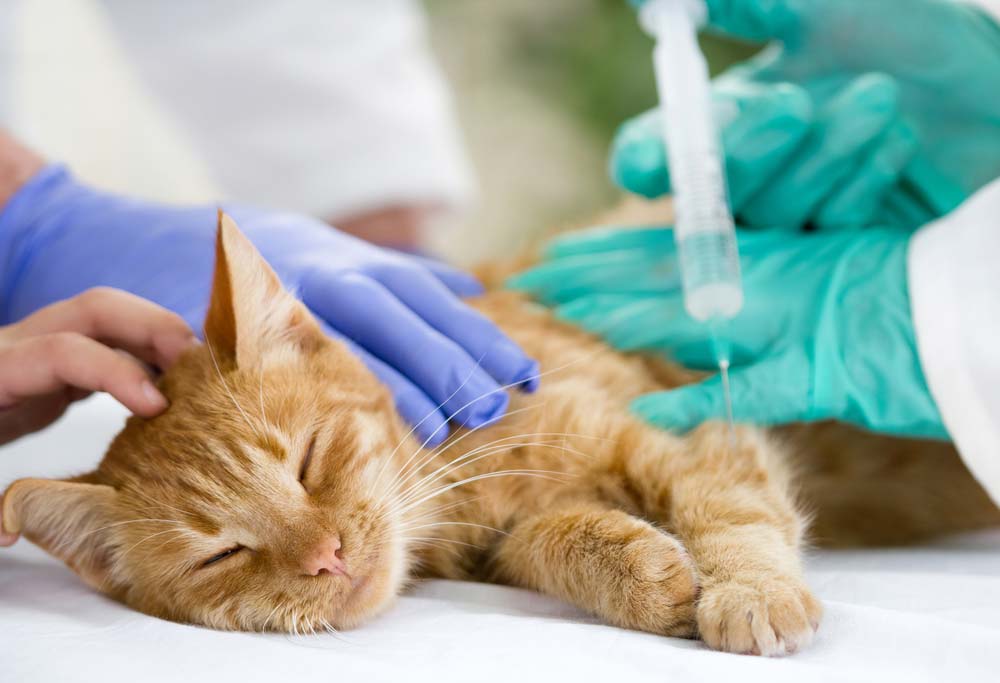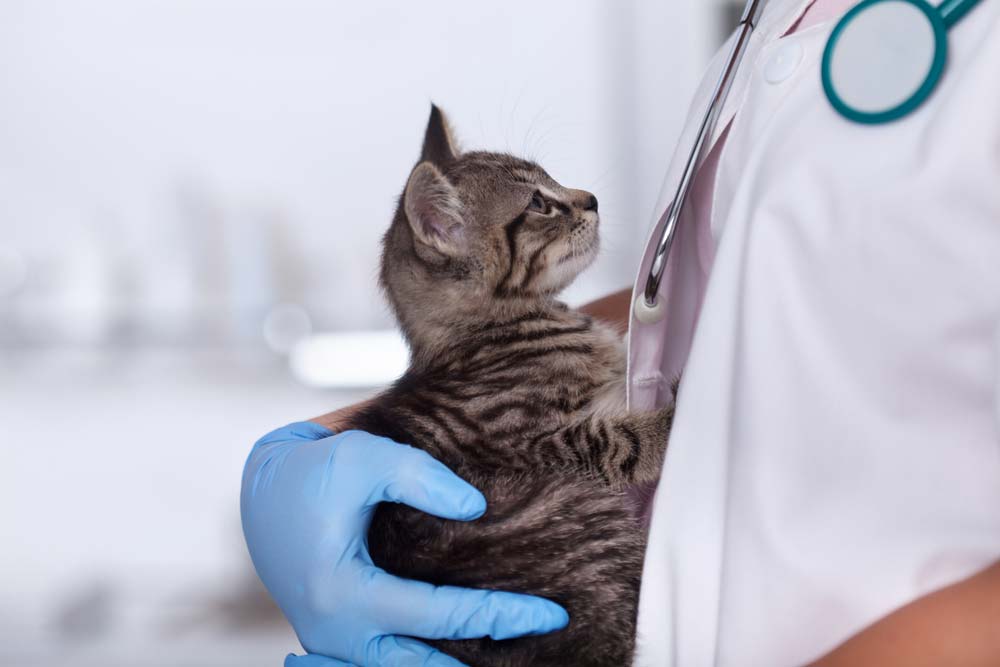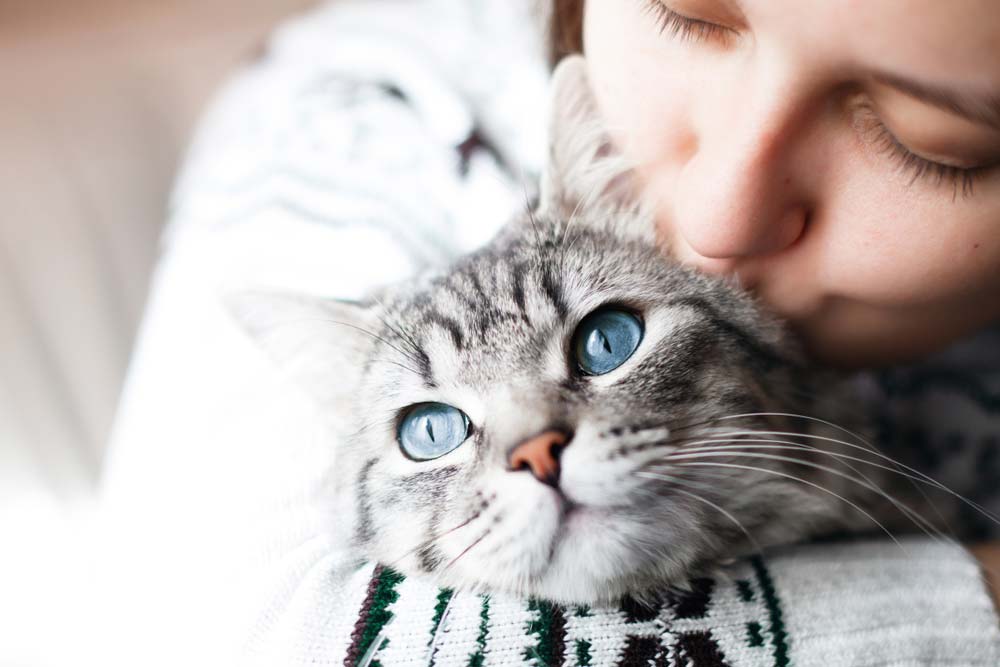Experienced Cat Vets in Mount Isa
Cat Care
Cats can make excellent companions and are wonderful pets. However, with an average lifespan ranging from 15-20 years, owning a cat is a long-term commitment and their needs must be carefully considered. At AAA Vet Clinic in Mount Isa, we offer a wide range of cat healthcare services.
Before you bring your cat or kitten home, we suggest you contact your local council and enquire about local regulations regarding such things as night curfews, compulsory containment within a property, desexing and microchipping.
A cat’s housing needs are simple. Whilst they will usually find a corner that suits them best indoors or outdoors, provide them with a basket, box or chair in a place where they feel safe and protected. Increasingly, cat owners are using cat enclosures to provide a safe outdoor area for cats. Placed in a weatherproof area, and these netted enclosures keep them safe from fights with other cats in the neighbourhood and protect local wildlife from cats’ natural hunting instincts.
For indoor cats, it can be a good idea to provide a scratching post to keep their claws in good condition and reduce the chances of your furniture being scratched.
Cats like to be clean at all times. As a result, cats can easily be toilet trained if a litter tray filled with a suitable cat litter is available. The litter tray should be cleaned daily to remove faeces and the litter itself changed frequently. Ensure the litter tray is placed in a quiet and private location. You may even need multiple trays if you have more than one pet cat. A good rule of thumb is one tray for each cat plus one extra.
All cats need to exercise. As cats naturally like climbing and perching themselves up high, trees and fences, for example, provide good opportunities for them if they have outdoor access. Indoor cats, however, will use furniture to climb and perch. Once again, having a scratch pole or indoor cat gym will give an indoor cat an effective alternative. Providing higher perching locations will also give your cats a more enriched environment.
Most cats require grooming assistance from their owners to remove excess hair. This helps in the reduction of furballs/hairballs and matted or tangled fur, which if left, may result in a visit to us. Except at moulting time, short haired cats are able to groom themselves adequately. In contrast, long haired cats require daily grooming by their owners. Furballs or hairballs can cause appetite and weight loss, and in a worst case scenario, result in surgery. During the moulting season, daily brushing is essential, and food designed specifically to assist with the reduction of hairballs will also help your cat process shed hair. Unlike dogs, you should not need to bathe a cat under normal circumstances.
Cat Grooming
Cat Health Check
When it comes to feeding, most cats like to graze, so we recommend offering small amounts often. Young, healthy cats require a high protein and fat diet. There are many formulations of cat food available, and we recommend discussing your cat’s individual nutritional needs with us to choose the most suitable formula. Older cats and those with certain medical conditions may require a prescription diet, which we can discuss with you as part of a treatment plan.
Ensure a fresh water bowl is accessible at all times, especially if they have a dry food diet. We recommend that you avoid offering cow's milk for your cat to drink, as this can cause stomach upsets.
Cats require a minimum of one health check per year. Regular visits help us diagnose, treat or even prevent health problems before they become life-threatening. Routine vaccinations, worming and flea control form the basics of feline medical care. We can also provide additional guidance on nutrition, behaviour, training and life-stage treatments available.
We welcome you to book an appointment with us to discuss how to keep your cat in optimum mental and physical health. Our team offer general
check-ups,
dentistry and more.
Vaccination has revolutionised control of infectious disease in our pets. It is essential that all pets are adequately vaccinated to help protect the pet population as a whole. Responsible pet care requires kittens to be given their initial course of vaccinations, but this cannot protect them for the rest of their lives. Adult cats require regular vaccination to maintain immunity against disease.
Please give us a call to discuss a suitable vaccination regime for your pet kitten or cat.
Kitten Vaccination
Kittens are ‘temporarily’ protected against many diseases by antibodies received through their mother’s milk. These maternal antibodies decline in the first couple of months of their lives, after which vaccinations are required to induce immunity against disease. A series of vaccinations is necessary for a kitten to adequately stimulate the immune system.
Initial vaccination programs should provide at least two vaccinations 3-4 weeks apart against some or all of the following: feline panleukopenia virus, feline calicivirus, feline herpesvirus, Chlamydia felis and feline leukaemia virus at or after eight weeks of age. Three vaccinations, two to four weeks apart, against feline immunodeficiency virus (FIV) are recommended at or after eight weeks of age for cats who will have any form of outdoor access.
Cat Vaccination
Young and Adult Cat Vaccination
Adult Cat Vaccination
The immunity from kitten vaccination weakens over time and your pet can again become susceptible to disease. Annual health checks and booster vaccinations will provide the best protection for the life of your pet.
After Vaccination Care
Following vaccination, some cats may be off-colour for a day or two, or have a slight swelling or tenderness at the injection site. Access to food and water and a comfortable area to rest are usually all that is required for a quick recovery. If the response seems more severe or persists, you should contact us for advice.
INFECTIOUS DISEASES OF CATS THAT WE VACCINATE AGAINST
Feline Panleukopenia Virus (also known as Feline Enteritis or Feline Parvovirus)
This is a very contagious disease, and the death rate is high, especially for young cats under 12 months of age. Pregnant cats may lose their young or give birth to kittens with abnormalities such as brain damage. Symptoms of feline panleukopenia are depression, loss of appetite and uncontrollable vomiting and diarrhoea, often with blood and severe abdominal pain.
The virus spreads so easily that heavily contaminated areas may need cleaning with a special disinfectant. Cats that do recover may continue to carry the virus for some time and infect other cats.
Cat Diseases We Vaccinate Against
Feline Respiratory Disease (‘CatFlu’)
90% of ‘cat flu’ cases are caused by feline herpesvirus (also known as feline rhinotracheitis) and/or feline calicivirus.
Feline respiratory disease affects cats of all ages, especially young kittens, Siamese and Burmese cats. It is highly contagious and causes sneezing, coughing, runny eyes, nasal discharge, loss of appetite and tongue ulcers.
Fortunately, the death rate is low except in young kittens, but the disease is distressing, and clinical signs may persist for several weeks. Recovered cats can continue to carry and spread the infection for long periods, and can show signs of the disease again if they become stressed.
Feline Immunodeficiency Virus (FIV)
Feline immunodeficiency virus (FIV) attacks a cat’s immune system, similar to HIV in humans. Infected cats’ natural defence against other diseases may be seriously affected, much in the same way as human AIDS.
This disease is not transmissible to humans.
FIV is almost always transmitted by bites from infected cats, since the virus that causes the disease is present in saliva. While some infected cats show no sign of disease, others may display initial symptoms such as fever, loss of appetite, diarrhoea, lethargy and swollen lymph nodes.
As the disease progresses, symptoms may occur such as weight loss, sores in and around the mouth, eye lesions, poor coat and chronic infections.
Eventually, the immune system becomes too weak to fight off other infections and diseases. As a result, the cat may die from one of these subsequent infections.
Unfortunately in Australia, a lot of cats with some form of outdoor access are infected with this virus.
Vaccination Against Serious Cat Viruses
Feline Leukaemia Virus (FeLV)
Feline Leukaemia is a serious disease of cats caused by feline leukaemia virus.
The virus attacks the immune system and may be associated with lack of appetite, weight loss and apathy, pale or yellow gums, vomiting, diarrhoea, reproductive problems, increased susceptibility to other infections, leukaemia and tumours. Many cats may be infected and show no signs at all.
About one third of infected cats remain chronically infected and may shed virus in their saliva, tears, nasal secretions and urine. The disease is then spread to uninfected cats by mutual grooming, fighting, sneezing or even flea bites.
Chlamydia felis
Chlamydia felis is a bacterial disease which is responsible for up to 30% of conjunctivitis in cats, and causes severe and persistent signs.
Kittens are more severely affected by Chlamydia felis when also infected with “Cat Flu”, and Chlamydia felis can be shed for many months. Vaccination against cat flu and Chlamydia felis helps protects against clinical disease.
Book an Appointment with Our Mount Isa Vets

